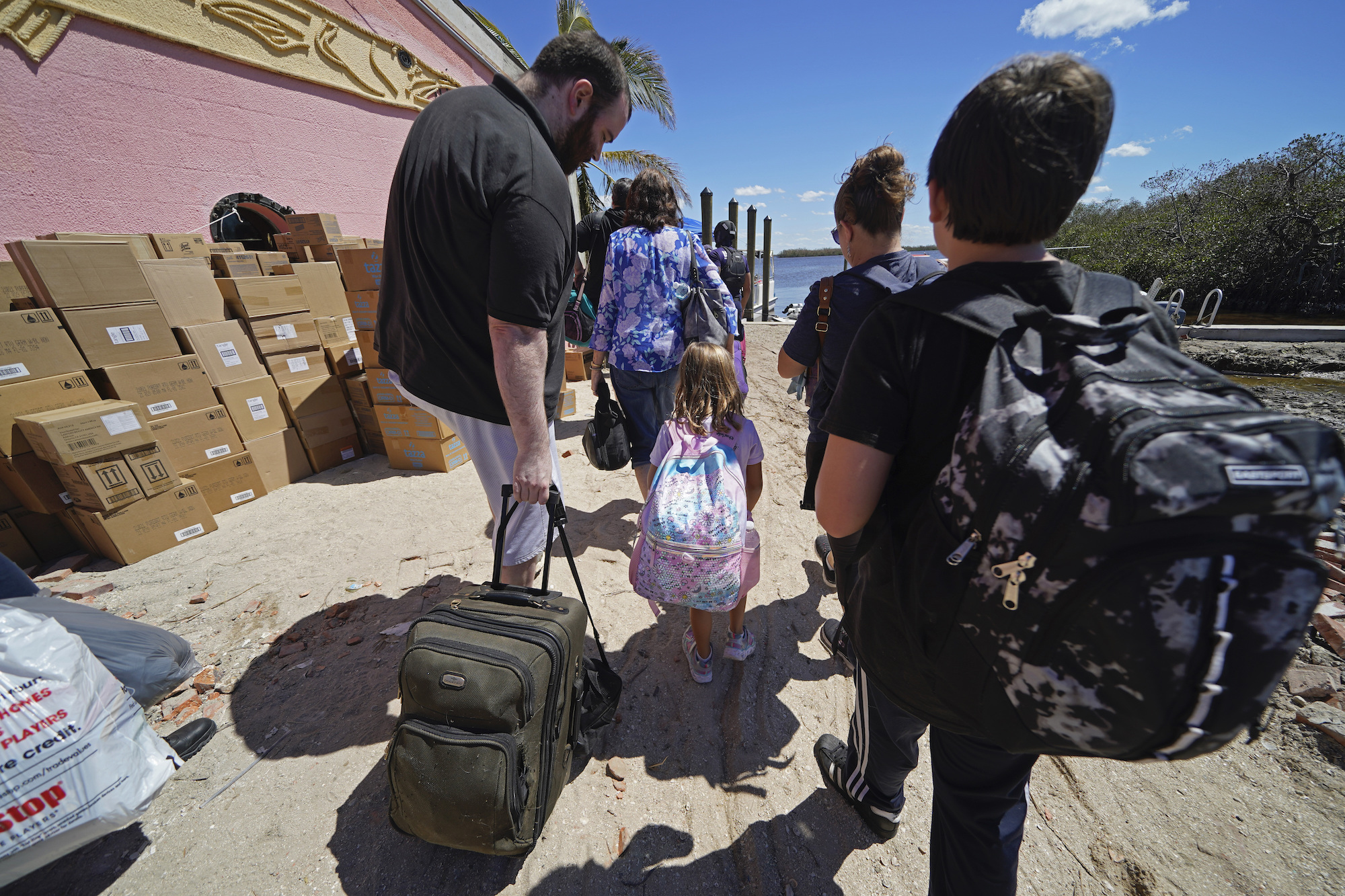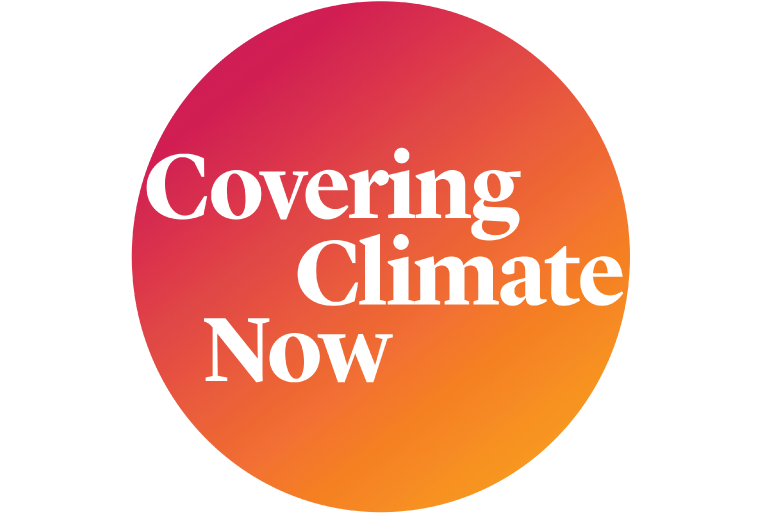Sign up for the daily CJR newsletter.
Last week, as millions of Florida residents prepared for the landfall of Hurricane Ian, Eric Holthaus, a Minnesota-based meteorologist and journalist, prepared his staff of meteorologists and journalists at Currently—“a weather service for the climate emergency”—to cover the Category 4 storm. Currently is rooted in a memo, written by Holthaus and climate activist Sydney Ghazarian and published in 2019, in which the two proposed a news company that would not shy away from showing climate change’s role in weather. The site launched in 2021..
When Hurricane Fiona hit Puerto Rico, on September 18, Currently flooded its Twitter account with satellite images and minute-by-minute updates in English and Spanish, and consistently situated the storm in a climate-change context—an approach it sustained through Hurricane Ian’s landfall in Florida last week.
In addition to traditional weather reporting, Currently runs a 24/7 text-a-meteorologist hotline, which pushes out storm alerts and enables users to get answers to specific weather questions. In the middle of Hurricane Ian, the hotline went down. CJR spoke with Holthaus about the irony of a hurricane taking out Currently’s hotline and the effort to bring it back, as well as the benefits of on-staff meteorologists. Our conversation has been edited for length and clarity.
CJR: What’s the status of the text-a-meteorologist hotline? Is it up and running again?
Holthaus: The server for the text message service was based in Miami, and it went down for a few hours. We had a few breaking-news text message campaigns that didn’t get sent during the middle of the night. Everything’s back up now.
We have about a thousand people that pay for that service right now, but during major events we open it up for free to anyone. During Hurricane Ian, maybe a few dozen people used it every day. They’re asking things like, I live in Orlando in this zip code—what’s it going to look like for the next thirty-six hours here? That was a typical question during the hurricane. But we also have someone in New Hampshire who is just really fascinated with the mountain next to their house, and they’re like, What’s the fog gonna be like tomorrow morning? So it can be pretty much anything.
Did it strike you as ironic, that a hurricane had affected your ability to report on the weather?
In the moment, it was like, Oh, man, this is so annoying, because what are the chances of our server being right in the place we’re trying to cover? Then it was making sure that we could get information out to folks as quickly as possible. Later on, it seemed an example of how things break in unpredictable ways but everything is connected, whether we like it or not.
In 2019, you coauthored a sort of climate-journalism manifesto that envisioned a climate-focused weather-news site. How does Currently enact that vision?
We call Currently “a weather service for the climate emergency.” Weather is the most immediate impact of climate change. And that’s where media organizations have kind of failed in the past in terms of coverage. So that’s where we’re trying to start.
I think that there needs to be more openness about how climate science is communicated in real time. For too long, it has been strictly a science issue; now, very clearly—to me, at least—it is a cultural and social issue, not just a science issue. So we’re trying to come at it from the realm of affected people and putting a service together that puts those people front and center as much as possible—their voices, their stories, and the kinds of information they need to make informed decisions.
I’m mostly interested in how people are adapting to changing weather, rather than how the weather itself is changing. Our most highly read stories, by far, are about the ongoing California drought, the Colorado River levels, and all that stuff. That’s an ongoing emergency—super dire every single day—and it’s just in the back of people’s minds. When you are explicit about it and bring it to the front, people get activated. People get interested. The more and more we can talk about these things, the more we can get conversations going around them.
How are your reporters working to bring in the voices of vulnerable and marginalized people?
We have broadened our definition of what an “expert” is when we’re trying to source stories. An expert is someone who has lived experience in the city we’re covering. They’re an expert on that city. And so, in addition to the meteorology and government sources that are typical in weather stories, we’re also trying to include voices from front-line folks as well.
When we see folks posting on social media about a storm, we try to approach them and tell the story with them, as long as it doesn’t feel exploitative. We’re also trying to pay them for their time—fifty dollars an hour, if it’s a longer interview. All of these things are probably crossing all sorts of traditional journalistic-ethics guidelines. We have evolving journalistic-ethics guidelines. Paying someone for their time seems like a justice move. At the same time, you want to make sure that that’s disclosed on our site. We’re still working on getting that disclaimer up.
When approaching major weather events like Hurricane Ian, how do you decide where to focus your reporters and resources?
We have three full-time meteorologists, including me, and we moved to six-hour shift work when we saw that the storm was going to be a big deal. We pass off the weather information to the editorial team, and then the editorial team makes their own decisions about how to allocate their resources and which parts of the storm to cover. We also have the weather-service part of our organization, which provides updates to the editorial team as well as updates and customized forecasts to our front-line partners, like the Miami Climate Alliance.
We just have two full-time journalists right now, and some freelancers that we work with, so we don’t have a huge amount of capacity to cover multiple angles. There are so many stories in Puerto Rico and in Florida that need to be told right now. What I told our team was, We don’t need to be the four hundredth person to retweet or repost the thing that is going viral. I would rather us talk about stories that aren’t being covered as much. We’re trying to do the basics of the storm. What’s it doing? What is it going to do next? And then what’s the human side of the weather forecast? What can we anticipate will happen based on the expected path of the storm?
It’s been an asset for the editorial team to just have our meteorologists on call and on demand to help them think through questions like What is storm surge? and Why has the forecast changed?, and to just get someone on the phone in ten minutes and talk about it.
How do you approach the challenge of delivering urgent pre-storm reporting while also providing scientific, human, and historical context?
For Hurricane Ian, we knew that the storm surge was going to be really bad—because of the geography of the coasts, the very shallow continental shelf, and all kinds of scenarios that the weather service has prepared over decades, saying they would result in one of the worst storm-surge hurricanes in US history. And that’s exactly what happened, basically. This is the advantage of having meteorologists on staff. We can tell those stories before they become national stories.
Treating weather as a news story is an approach that I think not many people take in journalism. So being a meteorologist as well as a journalist, I’ve been able to say, I know that this is very likely to happen, and here’s what it will look like if it does. Traditional journalism does not treat that as a story because it hasn’t happened yet. But weather-forecasting abilities have advanced rapidly in the last twenty years. The moment a hurricane makes landfall, that’s when it becomes a front-page story, because it has officially happened. But six hours before landfall, it’s obviously gonna happen. If it’s gonna happen, why not elevate the story when people can take action? Our readers are most interested in wanting to help change the outcome of the story.
Has America ever needed a media defender more than now? Help us by joining CJR today.









